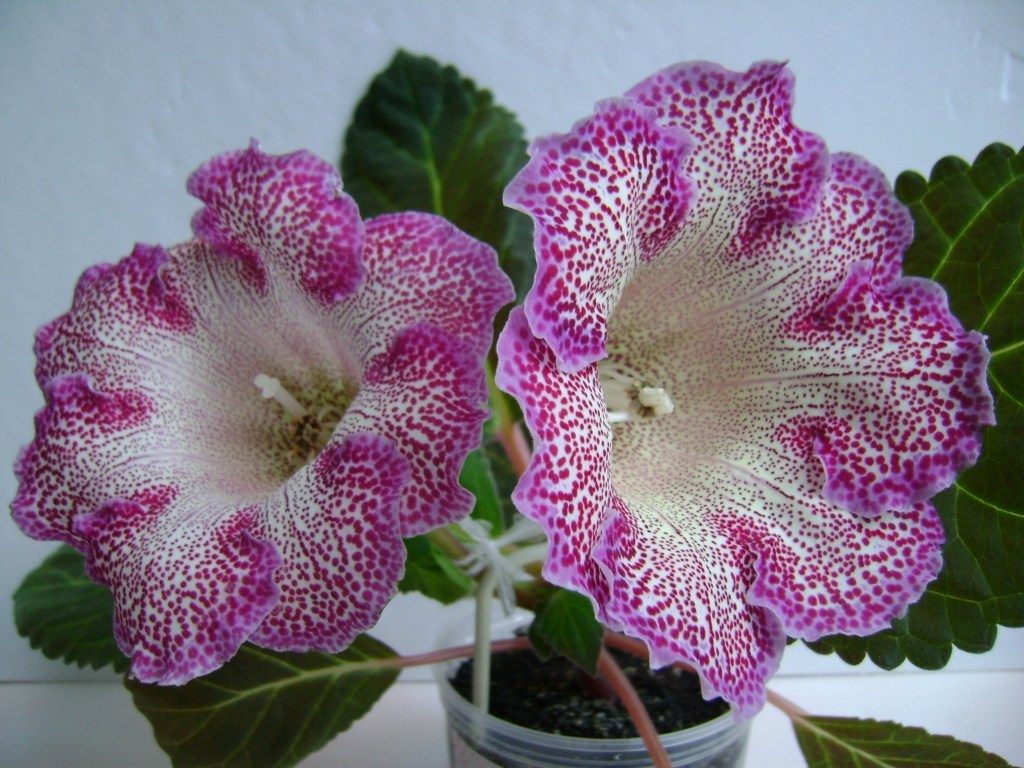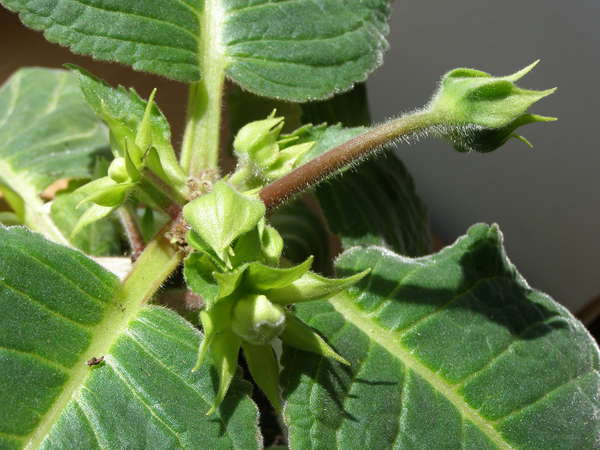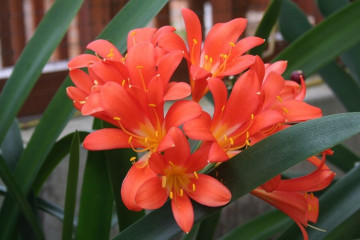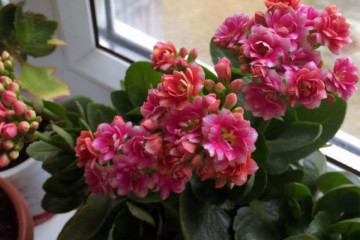Why gloxinia does not bloom at home
Content:
Among indoor plants, Gloxinia deserves special attention, which is gaining popularity not only among experienced gardeners, but also among beginners. And this is not surprising, since its flowering pleases with its beauty. Despite the ease of breeding, you can often hear questions about why gloxinia does not bloom. The article discusses the main causes of this problem and methods for solving them.
Why gloxinia does not bloom: the main sources of the problem
In most cases, questions about why gloxinia does not bloom and bloom at home are directly related to the time of the year. So, many gardeners note the presence of similar problems in the last months of wintering. First of all, this correlates with violations of the conditions of care.
In addition to supervised errors, flowering may not occur due to the influence of the following factors:
- old or damaged tuber. When buying an old or broken tuber, the plant needs more care, otherwise the gloxinia stops growing;
- chemical poisoning of the soil for cultivation. Using unsuitable fertilizers leads to soil contamination, which causes the plant to rot quickly. Therefore, it is important to correctly approach the purchase of top dressing;
- low air humidity. Gloxinia needs sufficient moisture, so that it receives nutrients and opens its buds. Also, the presence of drafts depresses the plant, which is accompanied by a violation of the integrity of the trunk structure;
- wrong watering schedule. Since there are no familiar conditions at home, any houseplant requires moderate watering and care. Low or high soil moisture negatively affects flowering;
- parasitic infection. The Gesneriev family is characterized by weak immunity to most types of parasites, which is why the tubers dry out quickly;
- non-compliance with the transplant rules. If the trunk of gloxinia was damaged during transplantation, further development is most often impossible. It also increases the risk of bacterial contamination;
- excessive fertilization. Overdose leads not only to flower wilting, but also contributes to the emergence of parasitic organisms.
- lack of lighting at high temperature conditions. The flowers are by their nature light-loving and do not tolerate heat, therefore, the room for germination should not have the effect of a greenhouse, otherwise the plant will not be able to bloom;
- incorrect processing methods. Lack of timely care has devastating harm not only to the foliage, but also to the trunk of the plant.
What to do if gloxinia buds dry
Excessively dry air and high temperatures are the most common reasons why gloxinia buds dry without blooming. So, if the summer is too hot, the plant should be sprayed in a timely manner. In addition, it is recommended to hang a dampened sheet or towel on the windows.
In the presence of constant wilting, you can feed with phosphorus-potassium supplements, since these microelements are especially important for the full formation of sheets.
If the buds of gloxinia are still drying, and the owner is tormented by the question of what to do with this, you should pay attention to the presence of diseases or the appearance of parasites. Most often, the plant is affected by thrips, nematodes or spider mites.
In case of infection, the plant should be treated with insecticides 2-5 times. If the soil is also contaminated, plant it in a different soil for a while. Re-treatment is performed after seven days. For prophylaxis, phytosporin or foundationazol can be used.
The following drugs are highly effective against most diseases:
- actellik;
- karate;
- phyto-farm;
- aktara.
Why do the buds turn black and rot
The main problem, why the buds of gloxinia turn black, is the presence of excessive waterlogging of the soil or high acidity of pH. Excessive content of nitrogen-containing additives often leads to blackening.
In this case, it is recommended to change the soil and adjust the watering schedule. To reduce the amount of nitrogen-containing fertilizers, it is best to use complex additives that contain elements of potassium or phosphorus. In addition to the ennobling properties, these drugs allow gloxinia to bloom much faster.
If, in addition to blackness, the buds begin to fall off, most likely, the winter was too cold for the plant. This also includes problems of undernutrition or overflow during wintering periods.
Usually, the addition of phosphorus fertilizers and additional lighting are sufficient to eliminate blackening. After 1-2 weeks, the plant will bloom again. If this does not work, most likely the tuber has begun to disappear.
Why does gloxinia have empty buds
A common reason why gloxinia's buds do not open or turn out to be empty inside is insufficient air temperature. At the same time, you can often observe a different picture - the presence of a green pea in the bud. After some time, the underdeveloped leg begins to turn brown and eventually disappears.
The surest advice is to cut off the empty peduncle and wait for the next buds. If the plant is not sick with anything, and the temperature conditions for growth in the house are sufficient, the problem will be solved by itself.
How to make gloxinia bloom again
In addition to answering the question of why gloxinia's buds do not bloom on time, it is important to know how to properly prepare the plant for another flowering. Following simple guidelines will allow you to see flowers again and enjoy their beauty.
For gloxinia to bloom again, you should:
- Cut off almost all the leaves, leaving only 3-4 leaves located at the bottom of the trunk, which will prevent it from drying out.
- After a while, the first shoots will appear on the sinuses, of which the strongest must be left, the weak ones must be cut off.
- Feed with nitrogenous fertilizer, which will accelerate the appearance of the green mass.
- At the beginning of the formation of full-fledged buds, add phosphorus fertilizer to stimulate the growth of inflorescences.
In the fall, many gardeners cannot understand why their gloxinia withers and falls off.Usually, this feature marks the beginning of preparing the plant for wintering, which makes it possible to gain the necessary strength for future flowering. During this period, watering should be reduced to a minimum.
For wintering, it is better to transfer the plant to a pot with a substrate and cover with a plastic bag. This will have the most beneficial effect on further growth and flowering. It is advisable to sprinkle the container with the tuber with sand. At the same time, it is important to ensure that the gloxinia does not dry out and wakes up ahead of time. Store at a temperature of -10 ° C.
If the tuber is not put to bed in winter, there is a high probability of the stem stretching, which will ruin the appearance. It will also affect flowering. However, it should be remembered that young tubers grown from seeds do not need rest at all, otherwise the flower may die.
In early January, after wintering, the tubers are planted in renewed soil, into which nutrients must be added in advance. If the plant wakes up too early and has released petals, it is best to remove them to eliminate future pulling.
Fertilizing the soil before wintering is not recommended. The exception is potassium additives - potassium monophosphate or potassium magnesium, which will prevent the plant from drying out.
Despite the fact that gloxinia can be found in almost any country house, many do not know how to properly care for it. This applies to both experienced gardeners and beginner amateurs. A correct understanding of the destructive factors will preserve the plant, which will allow you to enjoy beautiful flowers for a long time.



















